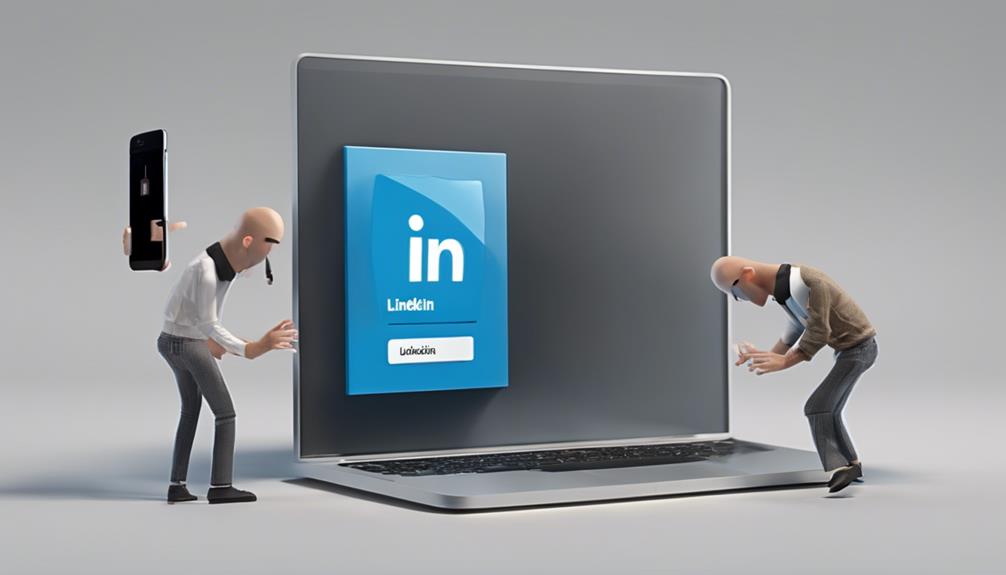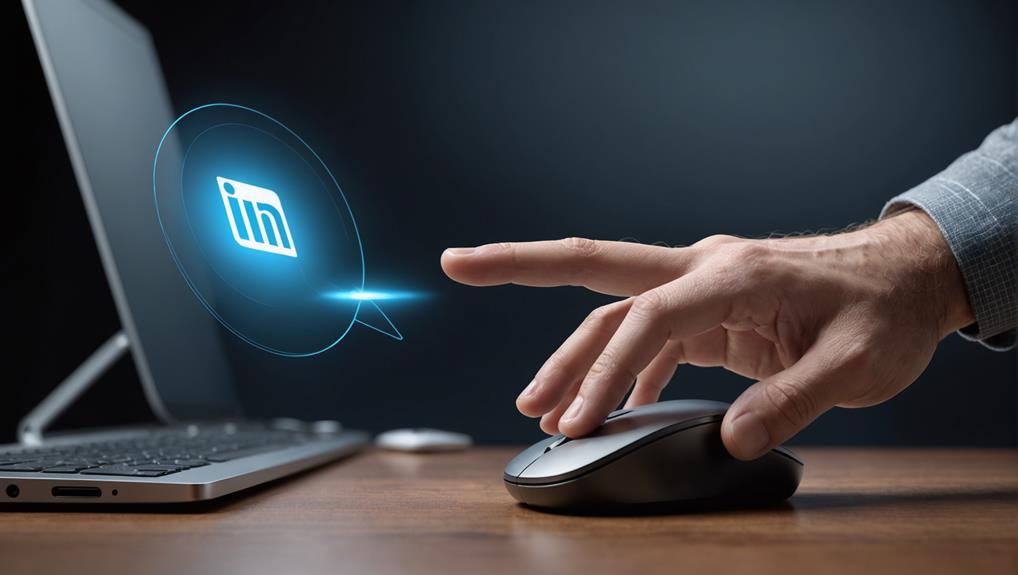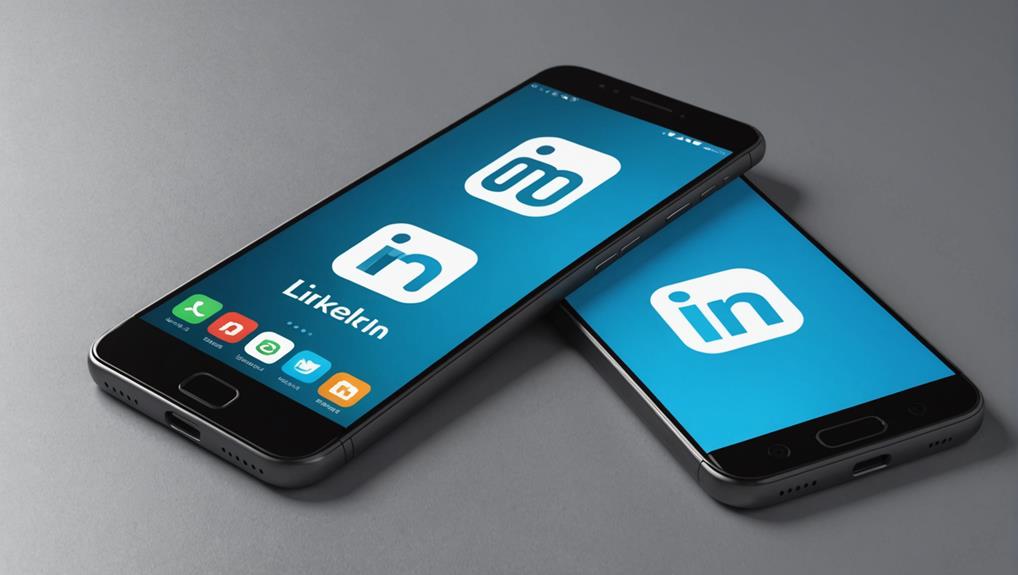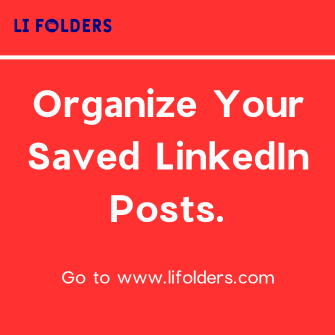
When you delete a conversation on LinkedIn, it only disappears from your own inbox; it doesn't vanish from the recipient's. Unlike some other platforms where deleting a message can remove it for both parties, LinkedIn maintains the conversation on the other person's end, allowing them to keep a record of your communication. This is part of LinkedIn's effort to respect professional boundaries and ensure each user has control over their own messages. Understanding more about how LinkedIn handles your information can help in effectively managing your professional communications and network. There's more to discover about leveraging this feature for your privacy and networking strategies.
Understanding LinkedIn's Messaging

LinkedIn's messaging feature allows you to communicate directly with your professional connections. This tool is vital for fostering relationships that can propel your career forward. You're not just sending messages; you're building bridges with potential mentors, partners, and industry peers. It's your gateway to being part of important conversations and staying relevant in your professional circle.
When you initiate or receive a message, you're tapping into a network that supports career growth and professional development. Each interaction you have could open doors to new opportunities. Imagine discussing a project with someone you admire or receiving advice that steers your career in the right direction. It's all about making meaningful connections that enrich your professional life.
Moreover, the ease of this feature ensures that no matter where you are, you can stay connected. Whether you're reaching out to someone for the first time or keeping in touch with a long-time colleague, LinkedIn makes these interactions seamless and straightforward. You're part of a community that values connectivity, growth, and mutual support. So, take advantage of this feature to enhance your network and feel the sense of belonging that every professional seeks.
Privacy Features in LinkedIn
You'll find that managing your privacy on LinkedIn is straightforward and customizable, allowing you to control who sees your activities and personal information. This sense of control helps you feel secure, knowing that you're part of a professional network that respects your privacy preferences.
As you navigate through your LinkedIn settings, you'll discover various options to tailor your experience. You can adjust who can see your connections, ensuring you maintain some privacy over your network. This is particularly useful if you're concerned about competitors snooping around your business relationships.
Moreover, LinkedIn allows you to manage your profile's visibility. You can decide if your profile is visible to everyone, just your connections, or completely hidden in search engines. This feature is especially important if you're job hunting and don't want your current employer to know.
You also have the ability to turn off activity broadcasts. This means you can make changes to your profile or follow new companies without announcing these updates to your entire network. It's a great way to keep some of your professional movements under wraps until you're ready to share them with the broader community.
These tools empower you to maintain a balance between visibility and privacy, fostering a secure environment where you can confidently grow your professional identity.
Deleting a Conversation: Process

While managing your privacy settings, you might also find it necessary to delete a conversation on LinkedIn. Whether it's to keep your inbox tidy or simply to remove a conversation that no longer serves your networking goals, the process is straightforward and designed to respect your decision to manage your digital interactions.
Firstly, navigate to your LinkedIn messages, and open the conversation you want to delete. You'll find that LinkedIn's interface is quite user-friendly, offering you a sense of control and community even in message management. Once you're in the conversation, look for the three dots or ‘More options' icon typically located at the top right corner of your screen. Clicking on this will reveal a dropdown menu.
From the menu, select ‘Delete conversation'. A prompt will then appear, asking you to confirm your action. This is your space to make sure you're making the right choice for your professional image and connections. Once you click ‘Delete', the conversation will be removed from your inbox.
Impact on Recipient's Inbox
Deleting a conversation from your LinkedIn inbox does not remove it from the recipient's inbox. When you decide to clear out your messages, it's crucial to remember that this action is purely personal to your account. The message you're deleting still lives on in the other person's conversation list, just as it was before.
This means you're still part of a shared history on LinkedIn, maintaining the connections you've built, even if you choose to tidy up your own space. It's a bit like taking a book off your shelf at home—it doesn't vanish from the library. This ensures that the threads of communication you've woven into your professional network remain intact for others, preserving the continuity and context of your interactions.
Comparison With Other Platforms

Comparing LinkedIn's message deletion process to other platforms reveals significant differences in how conversations are managed. When you delete a message on WhatsApp or Facebook Messenger, it disappears from your device but not from the recipient's. You're part of a community where your actions don't erase history for everyone else; they only affect your view.
On platforms like Snapchat, however, messages can vanish for both users, fostering a sense of ephemeral connection unique to that environment. You feel like you're in a space where moments are shared briefly before they disappear, just like real-life interactions.
LinkedIn, on the other hand, maintains a professional atmosphere. When you delete a conversation, it only disappears from your inbox. The other person still retains their copy. This setup emphasizes a professional boundary and respect for each individual's control over their communication records. It's about maintaining a professional appearance and ensuring that every interaction can stand on its own, reflecting the importance of each connection within your network.
You're not just using these tools to chat; you're building lasting professional relationships, and how these platforms handle deletions plays a big part in shaping that experience.
Best Practices for LinkedIn Messaging
Understanding how to effectively manage LinkedIn messages will help you maintain professionalism and build stronger connections. When you're reaching out to new contacts, always personalize your messages. A generic greeting won't make you stand out; instead, mention specific details that show you've taken the time to understand their background or interests. This personalized touch makes the recipient feel valued and more likely to engage with you.
Remember, LinkedIn is a professional network, so keep your tone formal yet approachable. Avoid using slang or overly casual language, which can come off as unprofessional. Instead, opt for clear, concise language that conveys your message without ambiguity.
Always respond promptly to messages you receive. This not only shows respect for the sender's time but also keeps the conversation flowing and productive. If you're not interested in a proposal or connection request, it's still polite to reply, thanking the person for their interest and explaining, briefly and kindly, why you won't be pursuing the connection further.
Lastly, don't forget to follow up. If someone has helped you or provided valuable insight, a quick message thanking them reinforces your appreciation and keeps the door open for future interactions. It's these thoughtful gestures that build lasting professional relationships.
Handling Sensitive Information

You should always handle sensitive information on LinkedIn with utmost care to maintain confidentiality and trust. When you're sharing details that could be classified as private or sensitive, consider how it might affect your professional relationships if that information were to be disclosed unintentionally. It's crucial to create a secure environment where everyone feels they belong and can share without fear of breach or misuse.
Before sending a message containing sensitive data, double-check who's on the recipient list. You're part of a community that relies on mutual respect and discretion. Always ask yourself if the information is necessary for the conversation. If it isn't, it's probably best left unsaid. Remember, once you hit send, control over who sees that information can diminish.
If you're ever in doubt, take a step back and reevaluate. You can always reach out through more secure means if necessary. LinkedIn is a powerful tool for connecting with others in your field, but it's also your responsibility to protect the information you share. You're not just looking out for yourself, but for your entire professional circle. So, let's keep it safe and maintain the trust that binds this community together.
Conclusion
You now understand that deleting a conversation on LinkedIn only removes it from your inbox, not the recipient's. This differs from some platforms where deletion is mutual. Remember, always handle sensitive information carefully and consider the permanence of digital conversations. Keep these best practices in mind to maintain your professionalism and privacy on LinkedIn. It's crucial to navigate these features wisely to ensure your LinkedIn messaging remains effective and secure.






